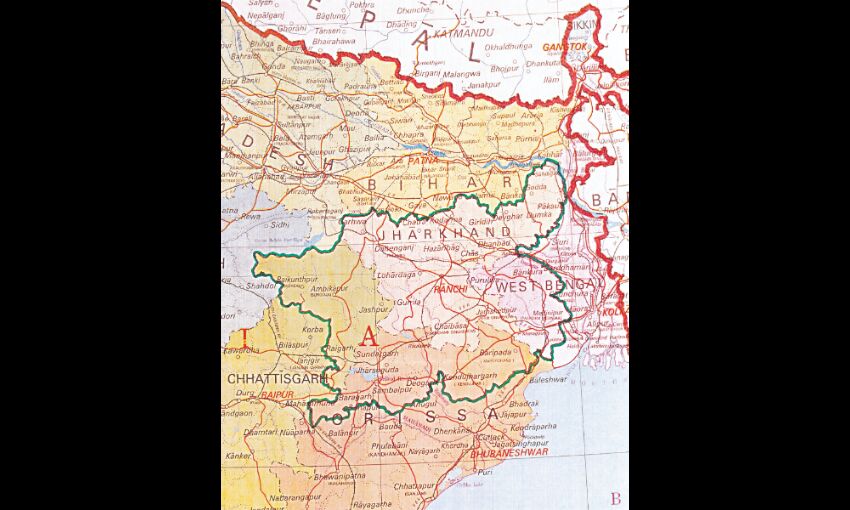A regional construct
A series of agrarian and missionary uprisings were brought under a single roof by Jaipal Singh to realise the separate statehood for Jharkhand

As long as the Jharkhand region remains divided into four states and the centres of political power remain at Patna, Calcutta, Bhopal and Bhubaneswar, the people of Jharkhand region will continue to be victims of cultural suppression and economic exploitation…therefore the districts of Palamu, Hazaribagh, Giridih, Dhanbad, Deoghar, Godda, Sahibganj, Ranchi, Lohardaga, Gumla and Singhbhum from Bihar; Sarguja and Raigarh from MP; Sundargarh, Sambalpur, Kendu, Jhargarh and Mayurbhanj from Orissa and three districts – Midnapore, Bankura and Purulia from West Bengal should be merged to make the new entity of Jharkhand….Jaipal Singh Munda, Founder President of the Jharkhand Party
Given the multitude of languages spoken by the 32 tribes in the proposed region and the growing numbers of 'outsiders/settlers/dikus' who became the majority by the time the demand for statehood took firm ground, it is clear that Jharkhand was not a demand for a specific ethnic or linguistic group, but emerged as a 'regional construct' in which the dominant discourse was that of 'inequity, inequality and a sense of alienation.' There was a feeling that if these districts constituted a separate political entity, the interests of the tribals and local inhabitants would occupy the centre stage of economic development. Therefore, it is important to make a distinction between the movement for the linguistic states of Gujarat, Orissa, Andhra and Punjab and the demand for Jharkhand —this was driven by the feelings of belonging to a region which was being deprived of its natural resources by the state on account of comparative demographic disadvantage. There was also a move to call the new state Vananchal, rather than Jharkhand – but even though the tribal population was less than one-third, they were firm that the new state should have an association with the struggle for a separate state.
The assertion for a separate and unique identity of the region was manifest in a series of agrarian uprisings, the most significant of which was the insurrection led by Birsa Munda during 1895-1900 and the Tana Bhagat movement in the second decade of the last century. While these were very powerful movements, the British were able to suppress them with superior firepower and the coordinated efforts of the civil and military administration. From time to time, the tribals also received concessions with regard to the collection of Minor Forest Produce as well as permission to brew Hadiya for non-commercial use. Missionary activity was given implicit support but did not cut as much ice, as it did in the hill tracts of the North-East. However, by the first decade of the twentieth century, the Church-led, ethnocentric movements, for example, the Christian Students' Union established under the leadership of J Bartholomew drew up a detailed memorandum on the tribal situation and the problems of tribals to the Simon Commission and the Cripps Mission.
The Missionary angle cannot be discounted, for the government had received a major setback during the Santhal revolt of 1917, the immediate cause of which was the recruitment campaign to mobilize 2,000 local tribals to serve in Egypt, Iraq and Mesopotamia during the First World War. Before this, between March and April, a war loan propaganda had been mounted and 'the combination of these novel proceedings not unnaturally exited uneasiness and alarm in the aboriginal mind.' The idea of serving across the seas in a foreign country in a semi-military capacity was strange and alien.
Perhaps, the British recruiters did not reckon with the fact that unlike the Christianised tribals in Nagaland and Mizoram, less than 4 per cent of the tribes in Jharkhand were baptised, and the Hindu pantheon provided the umbrella to their belief systems. Moreover, the Santhals resented the fact of being recruited as non–combatants and porters, whereas, in the Naga and the Lushai Hills, the Missionaries had been able to portray the recruitment as an opportunity to go to War for the King and the Christ.
By 1920, the first-ever systematic effort to get all the tribals on an inter-denominational platform was made by the Chhotanagpur Unnati Samaj. The leadership was provided by tribal teachers, and it sought to secure employment for educated tribals, reservation in the services and the legislative bodies, and the formation of a sub-state, joined to Bengal or Orissa and this was the main thrust of the memorandum to the Simon Commission and the Cripps Mission. Later, a Kisan Sabha and an Adivasi Mahasabha were also organised, and after Independence, all these were brought together as the Jharkhand party by the Oxford-educated Jaipal Singh Munda, a recent convert to Christianity who was equally passionate and committed to his tribal ethnicity. During World War-II, he again made efforts to mobilise recruitment for the British Indian army, which met with partial success, mostly amongst the converts and the Mundas. But he certainly became a well-known leader during this period. Under his mentorship, the Jharkhand party became the main elected opposition to Congress in Bihar in the 1950s. He was quite distraught when the Roy-Sinha proposal for the merger of WB and Bihar was dropped, for he was keen on a united Purva Pradesh (Bihar, Bengal and Orissa) for the tribal population in Purva Pradesh would have been quite substantial.
The writer is the Director of LBSNAA and Honorary Curator, Valley of Words: Literature and Arts Festival, Dehradun.
Views expressed are personal



